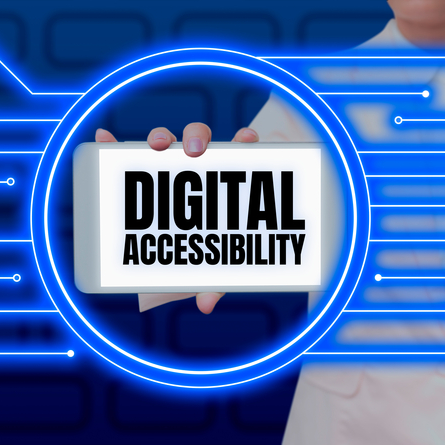
One fundamental aspect of digital accessibility is keyboard operability. The advent of the mouse in the 90’s saw the use of keyboard commands drop rapidly. However, it is important to remember those keyboard commands. Keyboard use improves efficiency as well.

Keyboard operability refers to the ability to navigate and interact with digital content using only a keyboard, without the need for a mouse or other pointing device. This may seem like a basic feature, but its importance cannot be overstated. Here’s why:

Many individuals with motor disabilities, such as paralysis or tremors, cannot use a mouse or touchpad. For them, a keyboard is often the primary input method. Ensuring keyboard operability ensures that these users can access and interact with digital content without barriers.
 Compatibility with Assistive Technologies
Compatibility with Assistive TechnologiesAssistive technologies like screen readers, speech recognition software, and switch devices often rely on keyboard commands for navigation and interaction. Keyboard operability ensures that these assistive technologies can function effectively, providing an accessible experience for users with disabilities.

Keyboard operability promotes a consistent user experience across different devices and platforms. It ensures that users can rely on the same keyboard shortcuts and commands regardless of the technology they use, making it easier for them to navigate and interact with digital content.

Many accessibility standards and guidelines, such as the Web Content Accessibility Guidelines (WCAG), require digital content to be keyboard operable. Ensuring compliance with these standards not only avoids legal issues but also demonstrates a commitment to inclusivity and equal access for all.

Keyboard operability doesn’t only benefit users with disabilities. It also enhances the usability of websites and applications for everyone. Some users prefer keyboard shortcuts for efficiency, and others may temporarily rely on a keyboard due to a broken mouse or touchpad.

Ensuring keyboard operability involves various considerations, including:
– Providing keyboard navigation options for all interactive elements.
– Ensuring that keyboard focus is visible and can be moved through all interactive elements.
– Avoiding keyboard traps that prevent users from navigating away from a particular element.
– Implementing consistent and intuitive keyboard shortcuts for common actions.
– Testing your digital content with keyboard-only users and assistive technologies to identify and address accessibility issues
Keyboard operability is a foundational principle of digital accessibility. It ensures that people with disabilities can independently access and interact with digital content and services. By prioritizing keyboard operability in your web and app development efforts, you not only comply with accessibility standards but also contribute to a more inclusive digital world where everyone can participate fully and equally.